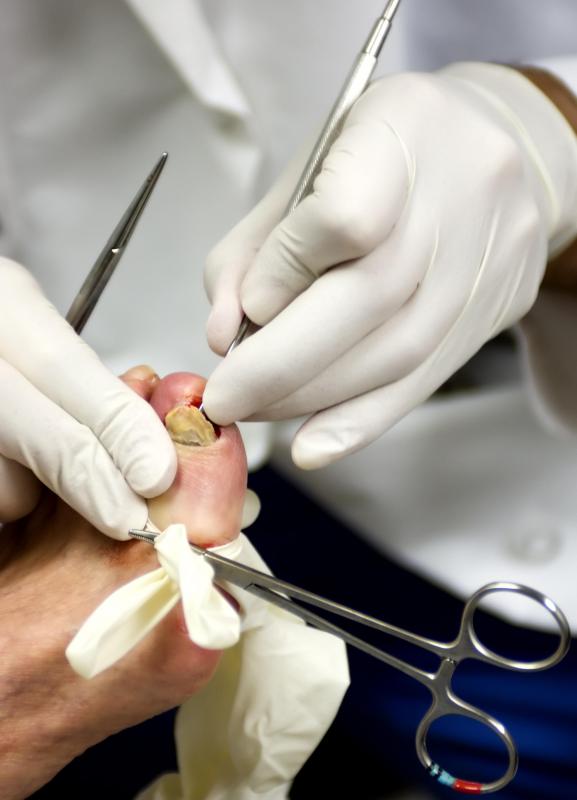At WiseGEEK, we're committed to delivering accurate, trustworthy information. Our expert-authored content is rigorously fact-checked and sourced from credible authorities. Discover how we uphold the highest standards in providing you with reliable knowledge.
What is Keratosis Follicularis?
Keratosis follicularis is a rare disease that causes widespread skin lesions and nail splitting. It is a genetic disorder that typically emerges during adolescence or early adulthood. During a flareup, hard, oily yellow or brown patches develop on the skin that may emit a strong odor. Most cases of keratosis follicularis are relatively minor and do not cause any health problems beyond their physical appearance. A dermatologist can usually shorten the course of an episode with topical medications and clinical dermabrasion techniques.
Recent genetic studies have been able to pinpoint the genetic mutation that causes keratosis follicularis. A child is likely to inherit the disorder if one or both parents possess a mutated copy of the gene ATP2A2. A defective gene affects skin and nail cells' ability to tightly join and hold together.

A keratosis follicularis skin rash can appear anywhere on the body, but it is most common on the chest, face, neck, or back. Areas that are susceptible to sweat buildup and irritation, such as the groin, armpits, and buttocks, may also be affected. Lesions are typically hard and wart-like, and they do not itch or cause pain. When finger or toenails are involved, they frequently crack and discolor. Very rarely, patients experience lesions or abscesses within mucous membranes in their nostrils, mouths, and throats as well.

Keratosis follicularis is very rare, but its presentation is so unique that most dermatologists can easily diagnose the condition. A doctor may decide to collect a skin biopsy for microscopic analysis. Once a diagnosis has been confirmed, the dermatologist can explain the disorder and offer advice on how to best keep it under control.
Most patients with mild skin problems and infrequent flareups do not need aggressive treatment. Regularly using moisturizing lotions and applying sunscreen before going outdoors can usually prevent recurring episodes. In addition, dermatologists recommend wearing breathable, loose clothing to help prevent sweat buildup and irritation that might trigger a flare. Scratching or picking at skin lesions is discouraged to reduce the chances of a secondary bacterial infection.

If a person experiences widespread or frequent skin problems, he or she may be prescribed a high-strength topical cream. A clinical procedure called dermabrasion, which involves manually scraping away the outer layers of hard lesions, can help to shorten healing time on large patches of skin. For nail problems, oral and topical drugs containing retinoids are usually effective at strengthening the nails. With proper management and regular checkups, most people are able to go for several years between flares.
AS FEATURED ON:
AS FEATURED ON:


















Discuss this Article
Post your comments